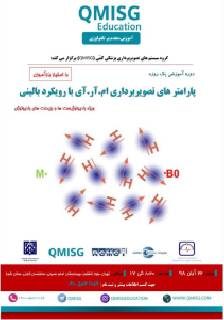Course Description
Program Objective
General Program Outline
Target Audience
Teachers
Date & Location
Course Description
Parameters of MRI Imaging with Clinical Approach
The use of magnetic resonance (MR) imaging is growing exponentially, in part because of the excellent anatomic and pathologic detail provided by the modality and because of recent technologic advances that have led to faster acquisition times. Radiology residents now are introduced in their 1st year of training to the MR pulse sequences routinely used in clinical imaging, including various spin-echo, gradient-echo, inversion-recovery, echo-planar imaging. However, to make optimal use of these techniques, radiologists also need a basic knowledge of the physics of MR imaging, including T1 recovery, T2 and T2* decay, repetition time, echo time, and chemical shift effects. besides, an understanding of contrast weighting is very helpful to obtain a better depiction of specific tissues for the diagnosis of various pathologic processes.
The use of magnetic resonance (MR) imaging is growing exponentially, in part because of the excellent anatomic and pathologic detail provided by the modality and because of recent technologic advances that have led to faster acquisition times. Radiology residents now are introduced in their 1st year of training to the MR pulse sequences routinely used in clinical imaging, including various spin-echo, gradient-echo, inversion-recovery, echo-planar imaging. However, to make optimal use of these techniques, radiologists also need a basic knowledge of the physics of MR imaging, including T1 recovery, T2 and T2* decay, repetition time, echo time, and chemical shift effects. besides, an understanding of contrast weighting is very helpful to obtain a better depiction of specific tissues for the diagnosis of various pathologic processes.
Program Objective
This 1-day course aims to grow the knowledge of using MRI, as we describe the physical basis of the most common MR pulse sequences routinely used in clinical imaging. To enhance understanding, our explanation of the physical principles is simplified; to highlight their practical relevance and clinical examples. Also, outputs will be discussed to teach attendees how they can gain a better position in their work as an MRI radiologist.
After completion of this training program, the attendees will be able to understand:
After completion of this training program, the attendees will be able to understand:
- MRI Physics Overview
- Repetition Time and Echo Time (Timing in MRI)
- Tissue Contrast Characterization
- MR Signal Localization
- K-Space and Image Matrix
- Clinical Applications of MR Sequences: SE, GRE
- Echo Planar Imaging
- Parallel Imaging
- Chemical Shift Effect
- Fat Related Imaging Techniques
- MRI Artifacts
General Program Outline
Target Audience
- Residents and Radiologists
- Physicians who interested in these topics.
Teachers
- Dr. Hamid Reza Salighe Rad
Date & Location
- Date: 8:30 am To 5:00 pm | 98/8/22
- Location: Tehran, Keshavarz Boulevard, Emam Khomeini Hospital, Kabali Building, Shora Hall


